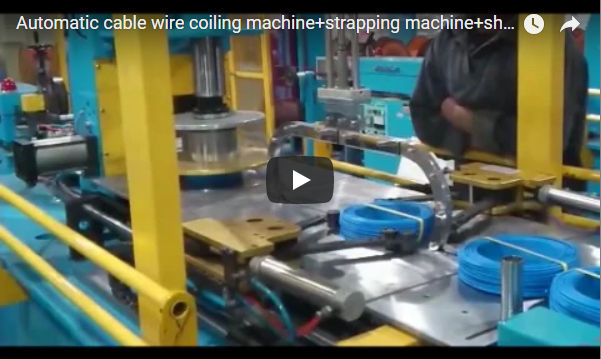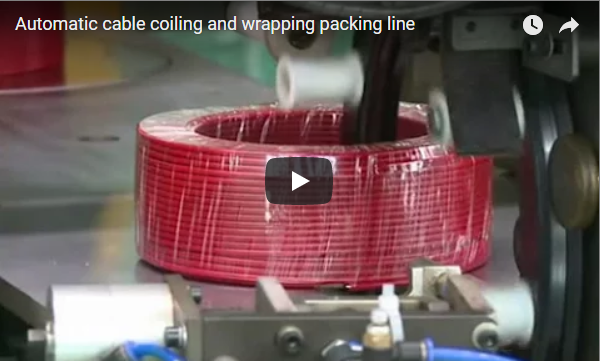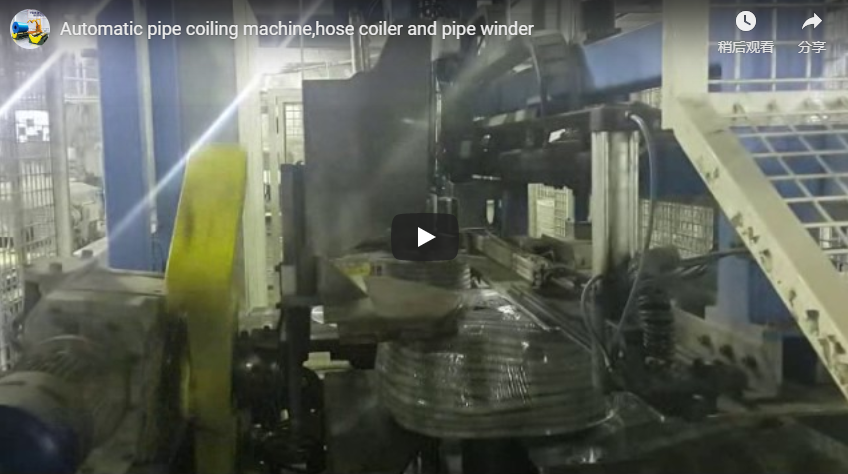Boosting Efficiency and Safety: A Fabricator's Guide to Automated Coil Stacking and Palletizing Equipment
Manual handling of heavy or awkwardly shaped coils – whether cable, wire, hose, or metal strip – presents significant challenges in modern manufacturing and fabrication environments. It's often labor-intensive, poses ergonomic risks, and can lead to inconsistencies in pallet stacking, impacting downstream processes and storage stability. Automated coil stacking and palletizing equipment offers a robust solution, streamlining end-of-line operations while enhancing safety and throughput. This article delves into the technical aspects, design considerations, and operational benefits of these critical automation systems.
1. Understanding Coil Stacking Palletizing Technology
At its core, coil stacking palletizing equipment automates the process of receiving individual coils from a production line or conveyor, orienting them correctly, and precisely placing them onto a pallet in a predetermined pattern, layer by layer. The goal is to create stable, dense, and uniform pallet loads ready for storage, shipping, or further processing. These systems can range from simple, dedicated stackers to complex robotic cells integrated with multiple production lines.
2. Key Applications Across Industries
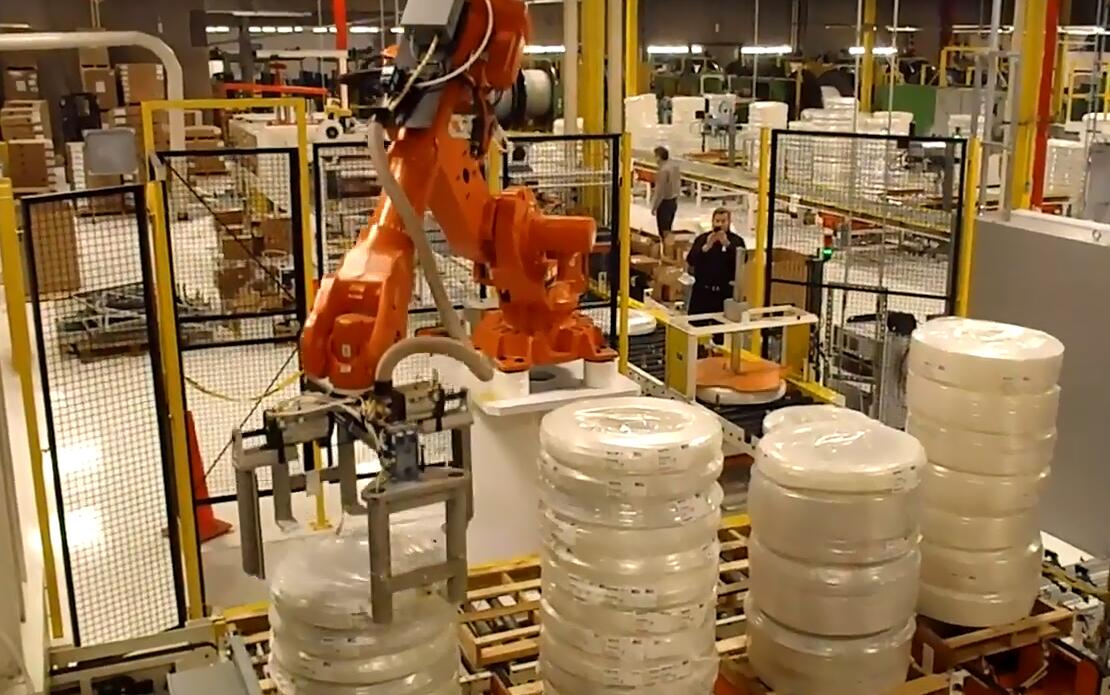
The versatility of automated coil palletizers makes them suitable for a wide array of coiled products. Common applications include:
- Wire & Cable: Handling reels and coils of electrical cable, communication wire, and fiber optics. Automation ensures consistent tension and prevents damage to sensitive materials.
- Metal Coils: Stacking coils of steel, aluminum, copper, or other metals, often directly from slitting or coiling lines. Handling heavy weights safely is a primary driver here.
- Hose & Tubing: Palletizing coils of industrial hose, hydraulic lines, or plastic tubing. Automated systems can manage varying coil rigidity and shapes.
- Other Flexible Materials: Applicable to coiled ropes, strapping, or other materials requiring organized palletization.
3. Core Components and System Design Insights
A typical automated coil stacking and palletizing system comprises several key components, engineered to work in concert:
- Infeed Conveyor: Transports coils from the production area to the palletizing cell. This can include accumulation zones to buffer product flow.
- Coil Handling Mechanism: This is the heart of the system. It can be:
- Robotic Arm: Highly flexible 6-axis robots equipped with specialized End-of-Arm Tooling (EOAT) or grippers designed for specific coil types (e.g., fork grippers, clamp grippers, vacuum grippers). Offers maximum flexibility for complex patterns and multiple product lines.
- Gantry System: An overhead structure with linear actuators (X-Y-Z movement) and a gripper. Often used for simpler, high-throughput applications or very heavy coils.
- Dedicated Stacker: A more specialized machine designed for a specific coil type and stacking pattern, often simpler and potentially faster for that single task.
- Gripper/End-of-Arm Tooling (EOAT): Critically important and custom-designed based on coil weight, dimensions, material (to avoid damage), and required orientation. May include sensors for precise pickup and placement.
- Pallet Dispenser: Automatically feeds empty pallets into the loading position.
- Layer Sheet/Tier Sheet Applicator (Optional): Places separator sheets between layers for added stability or product protection.
- Outfeed Conveyor: Transports completed pallet loads away from the cell, often to a stretch wrapper or staging area.
- Control System: Typically PLC-based (e.g., Siemens, Allen-Bradley) with an HMI (Human-Machine Interface) touchscreen for system operation, recipe management (stacking patterns), diagnostics, and monitoring.
- Safety Guarding: Physical barriers, light curtains, safety interlocks, and emergency stops conforming to industry safety standards (e.g., ANSI/RIA R15.06) are essential to protect personnel.
4. Technical Specifications & Performance Comparison (Typical Ranges)
When evaluating systems, specific performance metrics are crucial. Below is a comparison of typical parameter ranges, though actual specifications vary significantly based on application and supplier: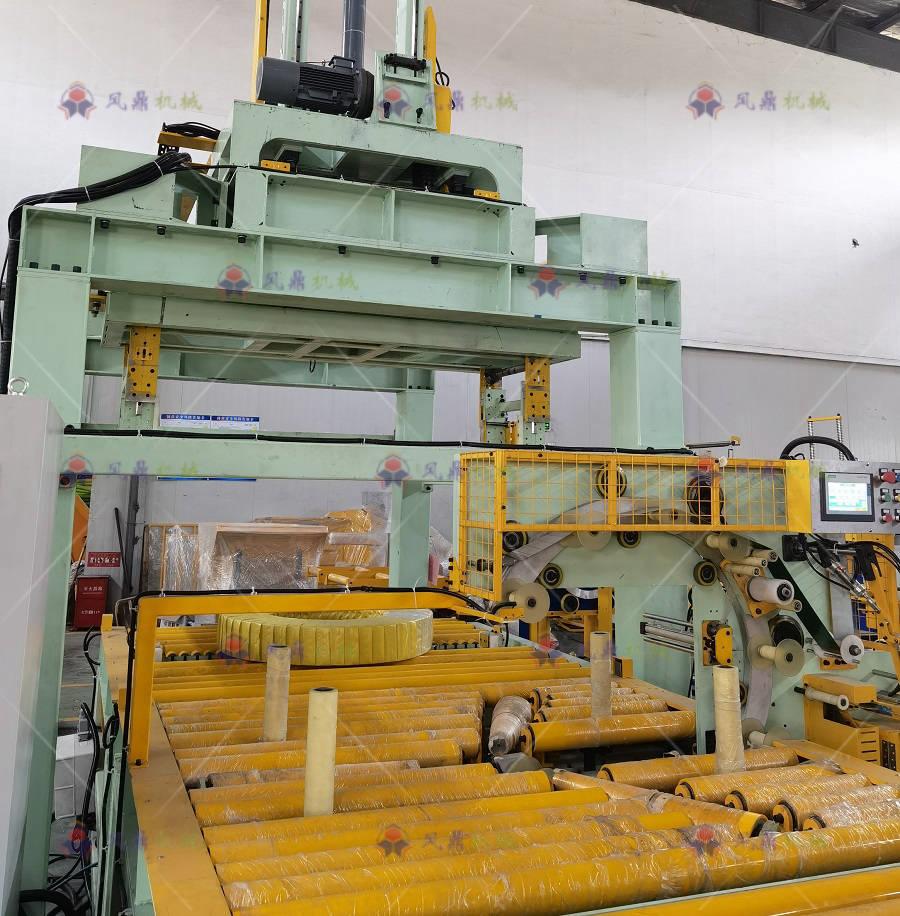 |
Parameter | Typical Range / Specification | Notes |
|---|---|---|---|
| Coil Weight Capacity | 10 kg – 1000+ kg (22 lbs – 2200+ lbs) | Per individual coil; system designed for max expected weight. | |
| Max Pallet Load | 1000 kg – 2500 kg (2200 lbs – 5500 lbs) | Dependent on pallet type and system structure. | |
| Cycle Time | 3 – 15+ coils per minute | Highly dependent on coil size, weight, travel distance, pattern complexity. | |
| Coil Dimensions (OD) | 300 mm – 1800+ mm (12" – 70"+) | System must accommodate the full range of product sizes. | |
| Coil Width/Height | 50 mm – 800+ mm (2" – 31"+) | Gripper design is critical here. | |
| Pallet Size Comp. | Standard (e.g., 48"x40", 1200x1000mm) & Custom | System adjustable or designed for specific pallet dimensions. | |
| Stacking Patterns | Columnar, Interlocked, Custom Programmable | Defined via HMI; flexibility depends on robot/gantry capability. | |
| Positional Accuracy | ± 2 mm to ± 10 mm | Precision needed for stable stacking and downstream handling. | |
| Control System | PLC (Siemens, Allen-Bradley, etc.), HMI | Integration capabilities (Ethernet/IP, Profinet) important. | |
| Power Requirements | 480V/3Ph/60Hz (NA typical), others available | Varies by system size and components. | |
| Pneumatic Requirements | 80-100 PSI (5.5 – 7 Bar) | For actuators, grippers. | |
| System Footprint | Highly Variable (e.g., 5m x 6m to 10m x 12m) | Depends on layout, robot reach, conveyors, guarding. |
5. Design Considerations for Seamless Integration
Implementing an automated palletizing system requires careful planning:
5.1. Footprint and Layout Integration
The system must physically fit within the available plant space, considering robot reach, conveyor runs, safety zones, maintenance access, and forklift traffic patterns.
5.2. Coil Handling Specifics
The gripper design must securely handle the full range of coil sizes, weights, and materials without causing damage. Coil orientation upon arrival and required orientation on the pallet must be accounted for.
5.3. Throughput Requirements
The palletizer's cycle time must match or exceed the output rate of the upstream production line(s) to avoid bottlenecks. Buffering or accumulation may be necessary.
5.4. Upstream and Downstream Integration
Consider how coils arrive (conveyor, AGV, manually) and how full pallets depart (conveyor, forklift, AGV). Integration with stretch wrappers, labelers, or MES/ERP systems enhances overall automation.
6. Operational Advantages and Return on Investment (ROI)
Investing in automated coil stacking yields significant benefits:
- Reduced Labor Costs: Frees up personnel from strenuous, repetitive manual stacking tasks for higher-value activities.
- Enhanced Workplace Safety: Eliminates ergonomic risks associated with lifting heavy or awkward coils, drastically reducing potential injuries. (See OSHA resources on ergonomics for related safety information).
- Consistent Stack Quality: Precise, repeatable placement creates more stable and uniform pallet loads, reducing product damage during handling and transit.
- Increased Throughput: Automated systems typically operate faster and more consistently than manual methods, boosting end-of-line efficiency.
- Minimized Product Damage: Gentle and precise handling by optimized grippers reduces scuffs, dents, or other damage common in manual handling.
- Improved Space Utilization: Consistent pallet patterns can lead to better warehouse space utilization.
- Data Integration: Modern systems can provide production data (counts, cycle times, faults) for performance monitoring and optimization.
The ROI calculation typically factors in labor savings, reduced injury costs, decreased product damage, and increased throughput, often resulting in payback periods of 1-3 years.
7. Personal Experience & Implementation Insights: What Fabricators Should Consider
From practical experience, successful implementation hinges on a few key areas:
- Gripper Versatility: If handling multiple coil types, investing in a flexible or easily changeable gripper design is crucial. Test thoroughly with all product variations.
- Robustness for the Environment: Fabrication shops can be demanding environments. Ensure the system (especially robotics and sensors) is specified for potential dust, temperature fluctuations, and vibration.
- Operator Training: While automated, skilled operators are needed for startup, monitoring, troubleshooting, and pattern changeovers. Comprehensive training is essential.
- Preventative Maintenance: Like any complex machinery, regular preventative maintenance schedules are vital to ensure uptime and longevity. Factor this into operational planning.
- Supplier Collaboration: Work closely with an experienced system integrator or equipment manufacturer. Their expertise in similar applications is invaluable during the design and commissioning phases.
8. Choosing the Right Coil Palletizing System
Selecting the optimal system involves evaluating:
- Application Needs: Clearly define coil types, sizes, weights, throughput rates, and required stacking patterns.
- Technology: Robot vs. Gantry vs. Dedicated Stacker – based on flexibility, speed, and budget requirements.
- Supplier Reputation & Expertise: Look for vendors with proven experience in your specific industry or with similar coil types.
- Customization Capabilities: Ensure the supplier can tailor the system, especially the gripper and controls, to your exact needs.
- Support & Service: Consider warranty, spare parts availability, technical support responsiveness, and local service presence.
- Total Cost of Ownership: Factor in initial cost, installation, training, maintenance, and potential operational savings.
Conclusion: Automating for a Competitive Edge
Automated coil stacking and palletizing equipment represents a significant step forward from manual handling, offering compelling advantages in efficiency, safety, and consistency. By carefully analyzing application requirements, understanding the available technology, and partnering with experienced suppliers, fabricators and manufacturers can implement robust solutions that streamline their end-of-line processes, reduce operational costs, and enhance their competitive position in the market.
For specific solutions and technical consultations tailored to your coil handling needs, consider reaching out to specialists in packaging automation.
Further Information:
Explore tailored coil stacking and palletizing solutions at www.fhopepack.com.


